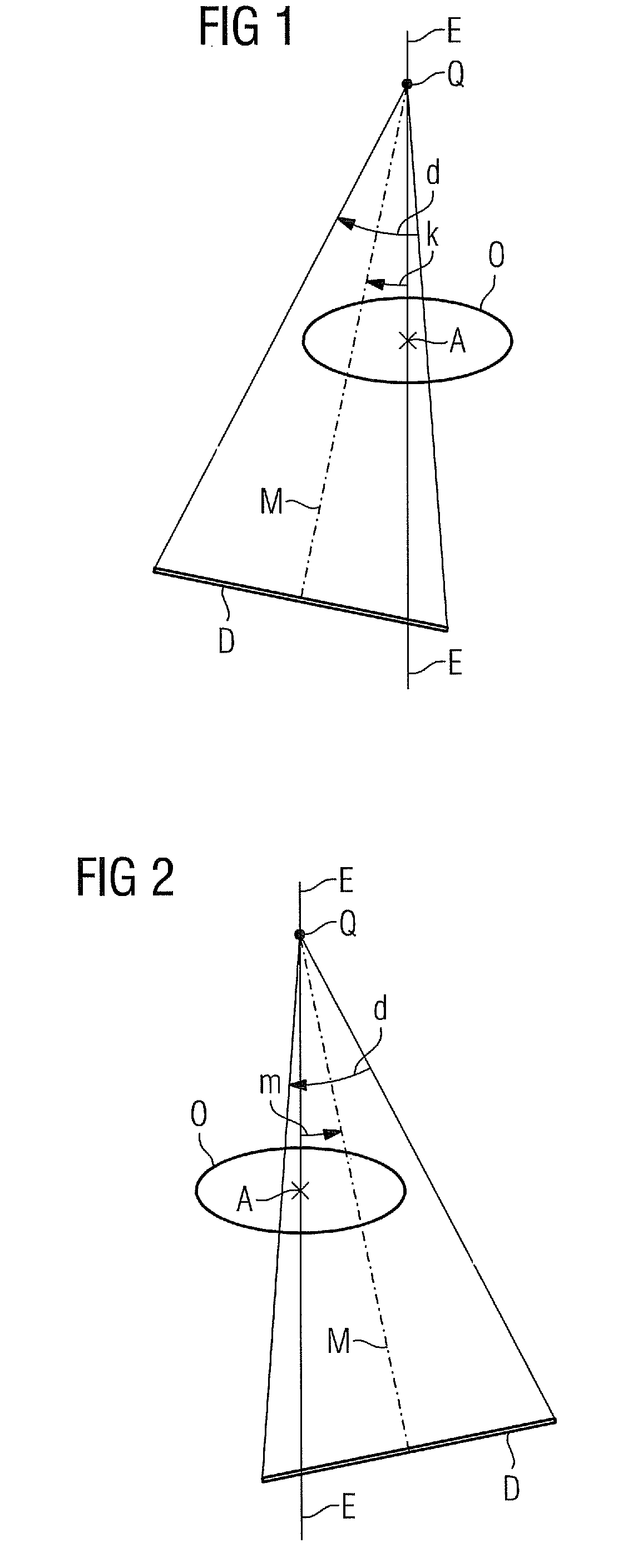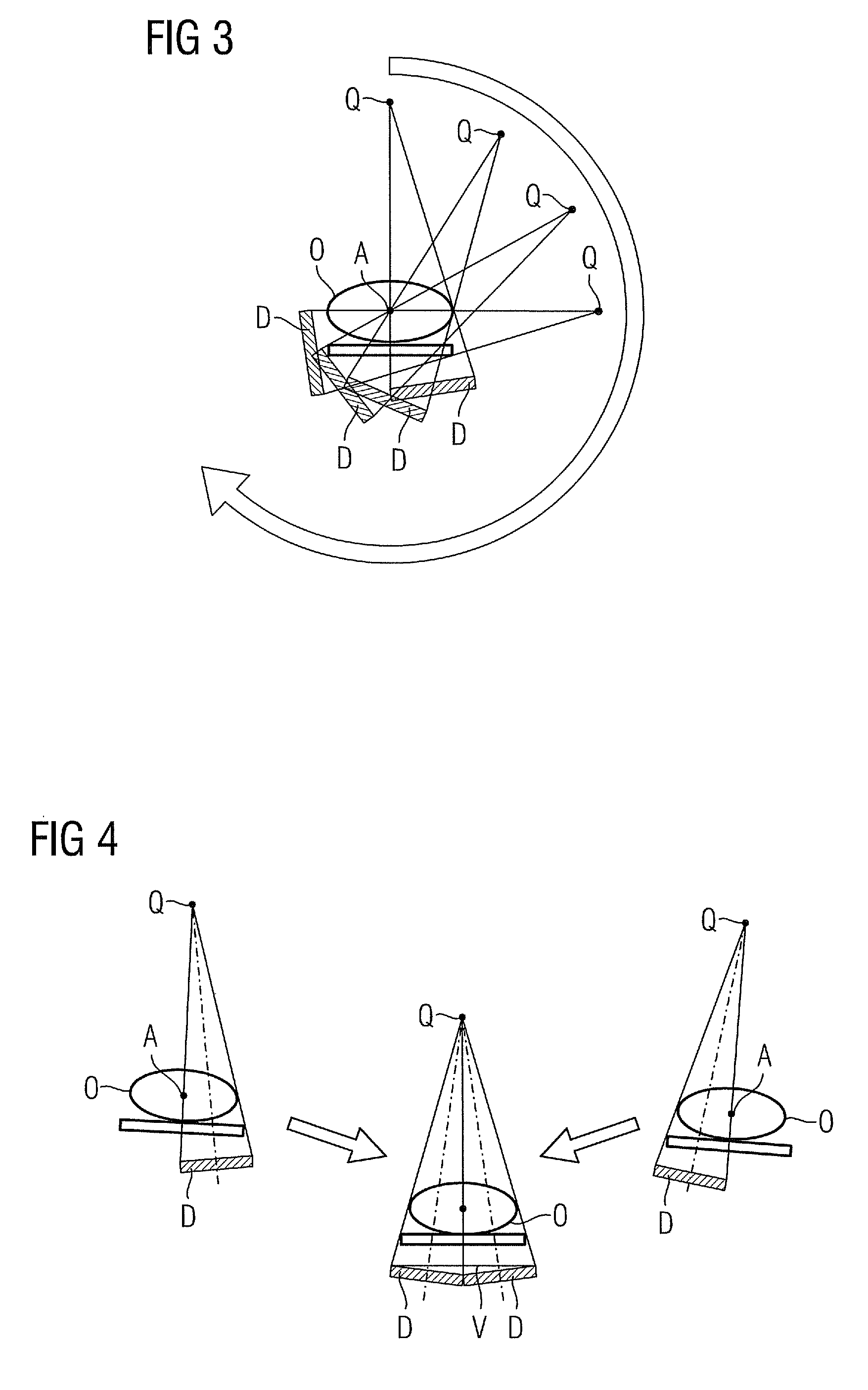Method for recording an examination object
a technology for recording objects and examinations, applied in tomography, instruments, applications, etc., can solve the problems of limiting the size of flat panel detectors in the past, and achieve the effect of low radiation loading on examination objects
- Summary
- Abstract
- Description
- Claims
- Application Information
AI Technical Summary
Benefits of technology
Problems solved by technology
Method used
Image
Examples
Embodiment Construction
[0025]Using flexible C-arm x-ray devices x-ray images can be recorded during a common rotation of an x-ray source Q and an x-ray detector D about an axis of rotation A (mostly in the area of the examination object) and used for a tomographic reconstruction. In the known large-volume method for recording 3D images of particularly large examination objects O the recording range is increased by recording two x-ray images for each position of the x-ray source Q using an x-ray detector D displaced in two different, opposite directions (e.g. to the “left” and to the “right”). This is frequently carried out by means of two consecutive rotations, whereby in the first rotation the x-ray detector is displaced in a first direction (e.g. to the left) and in the second rotation is displaced in the opposite second direction (e.g. to the right). The two x-ray images can then be combined to create a total image and the plurality of various total images can be reconstructed to form a 3D image.
[0026]...
PUM
 Login to View More
Login to View More Abstract
Description
Claims
Application Information
 Login to View More
Login to View More - R&D
- Intellectual Property
- Life Sciences
- Materials
- Tech Scout
- Unparalleled Data Quality
- Higher Quality Content
- 60% Fewer Hallucinations
Browse by: Latest US Patents, China's latest patents, Technical Efficacy Thesaurus, Application Domain, Technology Topic, Popular Technical Reports.
© 2025 PatSnap. All rights reserved.Legal|Privacy policy|Modern Slavery Act Transparency Statement|Sitemap|About US| Contact US: help@patsnap.com



